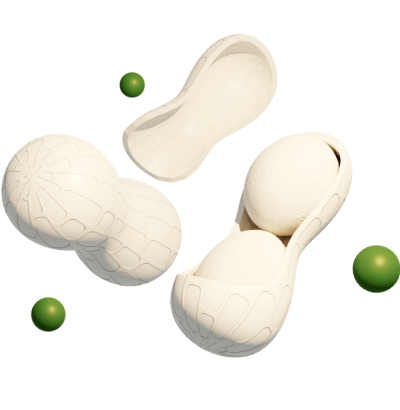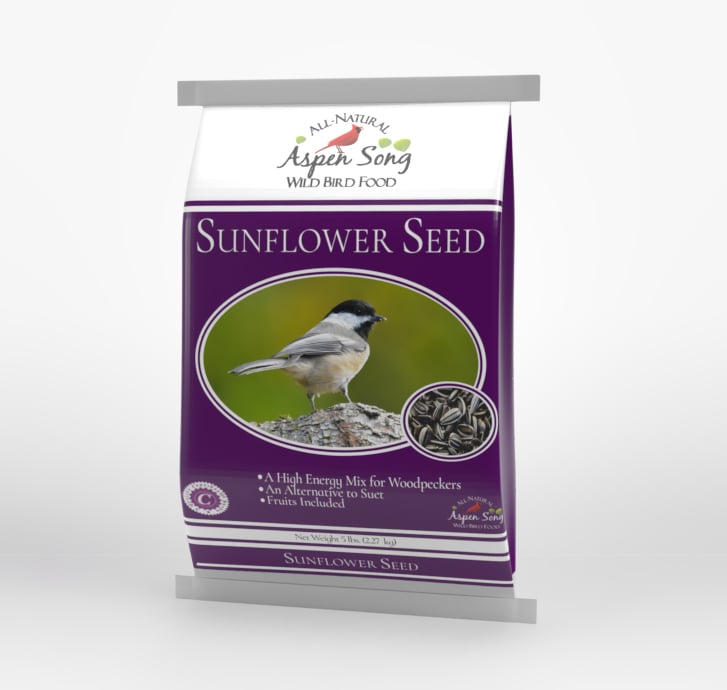Feed the Difference

Ingredients
Human-grade ingredients chosen for quality and deliciousness.

Manufacturing
Crystal clean facilities and careful quality assurance start to finish.

Philosophy
Food designed with the animal in mind, not our profit margains.


Monthly Wild Bird Feeding Advice

January Feeding Tip
Warmth radiates from the crackling fire. Steam rises from a mug of hot cocoa at your side. You pause from the morning paper and look out the window at the bird feeders. A group of your regular visitors are busy consuming Aspen Song®. You wonder: “How do these beautiful animals survive such harsh conditions? Do they depend on me to keep those feeders filled?”Your winter songbirds fall into two groups. Some are year-round residents who remain north knowing that an ample supply of natural seed stocks will be available throughout the winter. The others are visitors from the far north who have moved south seeking more dependable food supplies. The temperatures on the other side of your windowpane make that need for food even more
February Feeding Tip
When visiting your favorite restaurant you expect dishes and utensils to be clean, food preparation areas to be sanitary, and the products to be healthy. Our songbirds should expect no less from us! When we attract these beautiful creatures to the “bird sanctuary” we have created for them in our yards, we have a responsibility to do no harm. Monthly washing of bird feeders should occur throughout the year. Use a solution of 9 parts water to 1 part bleach. Immerse feeders in the solution and scrub them with a brush. Rinse thoroughly, and allow them to dry completely before re-filling with seed. To simplify this process, choose feeders with easy clean features. Our favorites are the tube feeder line from Aspects, Inc., which have
March Feeding Tip
It has been awhile since we have seen green plants growing outside our favorite bird-viewing window. Our seed-eating feeder birds have noticed as well. Throughout the winter months, they feasted on the many native seeds set last growing season in your neighborhood. Of course they supplemented that winter supply with their visits to your Aspen Song offerings. As winter winds down, food sources are at their lowest for our bird friends. This is an important time of year to keep the feeders filled! Once warm weather arrives, they will be able to supplement their diets with insects and greening plant material. But until then, they appreciate our help. This is the time of the year when you may see early migrants returning to your northeastern
April Feeding Tip
The hummingbirds are coming! The hummingbirds are coming! It is time to get those hummingbird feeders out of winter hibernation, clean them up, make up some nectar, and get them out in their summer spots. Our only eastern hummingbird species, the Ruby-throated Hummingbird, is on its way north. A really fun way to watch their march northward is at the website: www.hummingbirds.net/map.html Aficionados post first arrival dates across the country and these are posted on a map of the United States.These amazing creatures weigh only 3-1/2 grams on average yet make a nonstop, 1000 mile flight across the Gulf of Mexico twice each year. No, they do not hitchhike on the backs of larger birds to make the passage! They do bulk up on nectar
May Feeding Tip
May in the northeastern United States is the month when the largest number of migratory bird species is present. Many of these beautiful songbirds are insect-eating birds that have spent the winter months in the southeast, the Caribbean, Central America, or South America. May is the peak of their northward movement back to breeding territories in northern latitudes.Many of these birds supplement their primary diet with seeds and other forms of vegetation. This makes May an exciting time at our bird feeders. Our regular feeder visitors will be joined by these seasonal species. Watch for the return of Rose-breasted Grosbeaks who relish the seeds in Aspen Song Cardinal Mix. Indigo Buntings will be joining the finches at your tube filled with Aspen Song Finch Mix.
June Feeding Tip
June is a great time to feed the birds. It offers a chance to see newly fledged youngsters brought to the yard for a lesson in table manners. Often the young are kept safely tucked away on vegetation proximate to the feeders. Mom and Dad can be observed moving back and forth to the feeder, carrying seeds to their family. Young will use visual signals they have learned in the nest like bill-gaping and wing-flutter to indicate their eagerness for food. Typically, nestlings are fed high protein diets of insects. For the seed-eating species part of the survival training for their progeny is to learn to recognize and consume appropriate seeds. Backyard feeders make a great setting for this important life lesson. The training makes
July Feeding Tip
Are you a summer kind of person? American Goldfinches (Carduelis tristis) are a summer kind of bird! This beautiful visitor to backyard feeders is one of the last species to begin the nesting cycle each year, typically waiting until late June or early July.When so many other birds are busy caring for “teenage” fledglings by then, why do goldfinches wait so long? The answer is simply that they are essentially 100% seed-eaters (herbivores). They even offer seeds to their newly hatched youngsters. By waiting until “the livin’ is easy,” they allow native grasses and herbaceous plants an opportunity to set seeds. This assures a plentiful supply of “baby food.” Offer a finch mix or nyjer seed in a nyjer-style tube feeder and you can help
August Feeding Tip
August is migration time for Ruby-throated hummingbirds. Exactly when in the month they depart depends on one’s location and when temperatures cool. Most have arrived in Central America by the second half of September. Some well-intentioned hummingbird aficionados take their feeders down early for fear of detaining the birds later than they should remain north. August actually is an important month to continue offering sugar water. As the population moves south, they need to refuel along the way. Migrating hummingbirds from breeding grounds north of a location, will find a stocked feeder as they travel. The feeder provides an important opportunity for travelers to rest and recharge their energy. The triggers to move south are ingrained in the birds and they will not tarry just
October Feeding Tip
By this point on the calendar, most of the temperate and neo-tropical migrants have left for southern and warmer climates. Why? Generally speaking, they are insect-eaters who leave for regions where food will continue to be available during winter months. The northeast’s resident birds remain with us at this time of year. Why? Seed-eating birds (granivores) have ample supplies of the fruits of native plants. Many of these plants have just completed setting their seeds at the end of the growing season.The woodpeckers and arboreal birds (chickadees, titmice, nuthatches) are busy consuming and storing tree seeds, collectively referred to as “mast.” These include beechnuts, hickory nuts, acorns, and many others. The smaller finches are busy gleaning seeds from the many native grasses and wildflowers. These
November Feeding Tip
Northeast News Flash! The various birding hotlines and listservs are buzzing with the news that many Pine Siskins are being seen at feeders across the northeastern states. This member of the finch family resides across northern Canada, Alaska, and in the high elevations of the Rocky Mountains. Pine Siskins “irrupt” into the United States when their natural food sources are not adequate within their normal range. It appears that the winter of 08-09 will be one of those years when many backyard birdwatchers will have the opportunity to see this visitor from the north. Look for a streaky bird with pale yellow on the wing and tail feathers. If one is perched on your finch tube feeder, notice the very slender bill. This feature limits
December Feeding Tip
In the month of December much of the northeastern United States experiences its first widespread snowfall. For some, the whitening of the landscape may be temporary and for others it may set the scene for the next three months. A general snowfall typically increases feeder activity substantially. This is a month to establish your yard as an important stop on the foraging pattern of neighborhood songbirds. Your complement of feeder birds does not become feeder-dependent in winter time. These species are resident year round because they have ample food supplies available throughout the seasons. But they do optimize their energy spent seeking food, by learning where the best supplies can be found. Winter time is a season of mixed-specie foraging flocks. Flocks of songbirds typically

September Feeding Tip
As the days of early fall shorten and nighttime temperatures drop, the specie mix and activity levels at many backyard bird feeders change as well. It is an important time of year to keep a steady supply of seed available to your avian visitors. Some of the feeder visits you are observing may not be about today’s nutritional requirements. Many of the seedeaters of the northeast are known food hoarders.Woodpeckers, nuthatches, titmice, chickadees, and jays will gather seeds and hide them for later, winter consumption. The storage site is referred to as a cache. Seeds “saved for a wintery day” may be hidden under leaves, wedged into the cracks of tree bark, or tucked in the junctions of tree boughs and branches. Studies have shown




